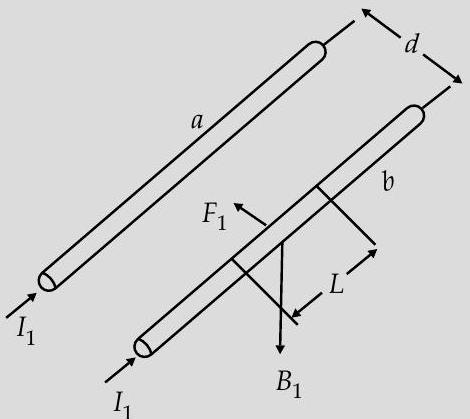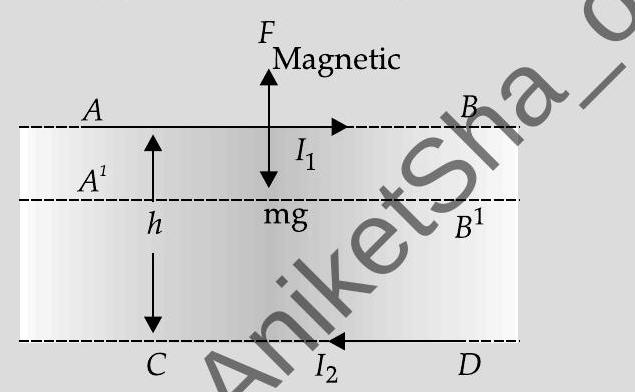Question: Q. 8. (a) Define SI unit of current in terms of the force between two parallel current carrying conductors.
(b) Two long straight parallel conductors carrying steady currents
Sol. (a) Definition of SI unit of current 1 (b) Explanation of the force of attraction
(a) One ampere is the value of that steady current which, when maintained in each of the two very long, straight, parallel conductors of negligible crosssection, and placed one metre apart in vacuum, would produce on each of these conductors a force equal to
(b) The wire (b) experiences a force due to the magnetic field caused by the current flowing in wire (a).

The magnetic field at any point on the wire (b) due to the current in wire (a) is perpendicular to the plane of two wires and pointing inwards and hence force on it will be towards wire (a). Similarly force on wire (a) will be towards wire (b). Hence two wires carrying currents in same direction attract each other.
Force on wire (3) due to wire (1)
Force on wire 3 due to wire 2
Net force on wire 3
Also accept
Note: please do not deduct last
[CBSE Marking Scheme 2018]
Q. 9. A horizontal wire
U] [CBSE SQP 2017-18]

Show Answer
Solution:
Ans.

Now consider the above diagram, if wire
Weight per unit length
Further, the restoring force/length
[CBSE Marking Scheme 2017] 1






